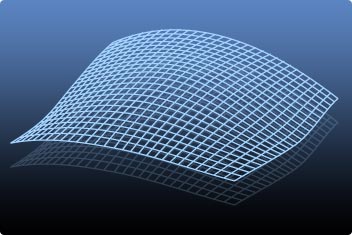1. In an age when photos and movie clips can be shared and enjoyed by all

Photos and short movie distribution sites are easy to use.
Before the availability of digital cameras, it was not possible to see the photos we took until the film was developed. With the advent of the digital camera, however, we can see photos as soon as we take them, and therefore the ways we enjoy images have changed. Social network services (SNS) for posting photos and movie clips on the Internet have become widespread in recent years, adding diversity to the ways we enjoy our images. The Internet has made it very easy to post photos or short movies taken with a digital camera on websites or SNS. The Internet not only lets us immediately share with others the excitement of the moment we take a photo, but allows us to share these moments in real time with people throughout the world. We are indeed in an era in which everyone can enjoy the photos and movie clips we take.
2. Developing the world's first digital compact camera with a built-in projector

Show photos as soon as you take them while traveling or at a party.
With a special focus on letting users share the photos and movie clips they have taken, Nikon has come up with a new way to enjoy digital cameras by developing the world's first compact digital camera with a built-in projector.
On holiday with family or friends, for example, you can project photos taken the same day onto the wall of your room, wherever you are staying. This camera also lets you easily display photos at wedding receptions, events and parties at home.
The biggest challenge that Nikon engineers faced in developing the world's first compact digital camera with a built-in projector was to find a viable balance between brightness and compactness. Using a large light source makes it possible to achieve the brightness of projectors used in halls and meeting rooms. The amount of light from a miniature projector inside a compact digital camera, however, would be limited and the projected image would inevitably be dark. The key was to find a way to collect as much light as possible from the light source. Nikon engineers thus developed "The free-curved lens" for the projector.

The projector covers a wide range of screen sizes, from 5 to 47 inches.
3. The free-curved lens was completed after countless problems were solved.

Image of a free-curved lens surface
The curvature varies across the surface
The free-curved lens has a curvature that varies across its surface. By adopting the free-curved lens as the condenser lens, which concentrates the light from the illuminant, it is possible to match the circular light emitted from the illuminant to the rectangular shape of the reflective liquid-crystal display inside the projector, ensuring that the limited amount of light is used with maximum efficiency.
Although the free-curved lens proved to be effective, there were still problems to overcome. Aspherical lenses have a uniform curvature to the left and right of the optical axis, whereas the free-curved lens developed for the projector has differently shaped curvatures across its surface. A high level of manufacturing technology is therefore required to produce lenses whose curvatures vary by only a few micrometers. Also required is an inspection system that can ensure that these lenses, when mass-produced, are faithfully manufactured according to the design. Nikon met these needs by creating a new production line equipped with all capabilities from manufacturing to inspection, making it possible to mass-produce free-curved lens raising the efficiency of the collecting lens, a feat previously thought to be near impossible. Once Nikon overcame these difficulties, it was possible to finally present to the world the first compact digital camera with built-in projector.
Other new products developed from the fusion of devices such as these may now begin to appear. In the near future, a built-in miniature projector could become a standard feature in a variety of digital imaging devices.
Free-curved lens maximizing a limited amount of light

